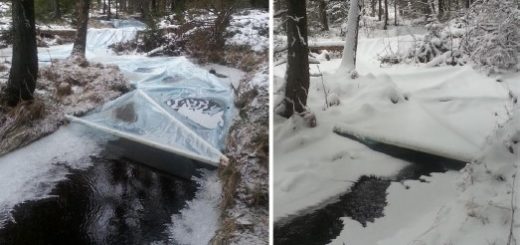Oyster aquaculture provides habitat for fish and invertebrates
Eastern oysters (Crassostrea virginica) have traditionally been farmed on leased shellfish beds in estuaries. The most common oyster farming technique in Connecticut waters is called bottom culture. In bottom culture, an oyster bed is comprised of two layers. The bed’s foundation is a hard substrate, usually shell, laid down on the bottom of the estuary. Then, juvenile oysters that have settled onto recycled shells (called “spat-on-shell”) are spread over the foundation where they will grow until they reach market size. Bottom culture beds mimic natural oyster reefs and provide habitat to juvenile fish and marine invertebrates.
In recent years, off-bottom cages have become a popular alternative to bottom culture in the oyster industry (Figure 1). The oysters settle on finely ground pieces of shell in nurseries before being placed in cages. The cages are then submerged on lease sites in the estuary to be grown out. Oyster cages come in a variety of different sizes and styles. The vertical, multi-tiered cages allow farmers to grow more oysters on their lease sites while potentially providing structured habitat for fish and invertebrates.
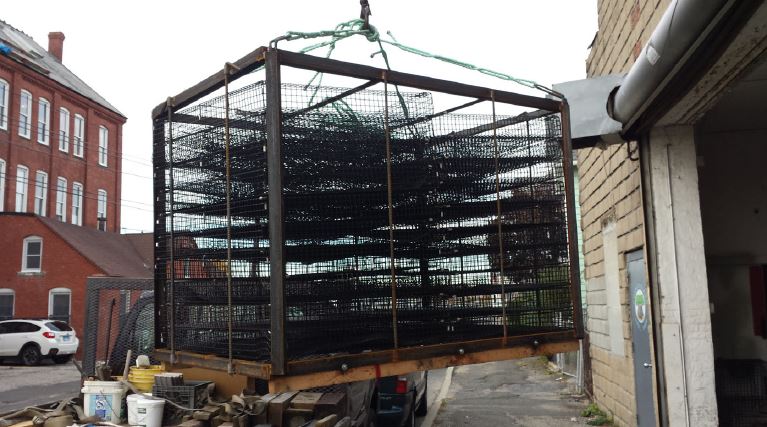
In 2016, Renee Mercaldo-Allen from NOAA Fisheries led a study to examine the assemblages of juvenile fish and benthic invertebrates using habitats created by oyster aquaculture in Long Island Sound off Milford, Connecticut (Figure 2). Long Island Sound is a long, tidal estuary between Connecticut and Long Island, New York. The area is known for its rich maritime history and oyster industry. The habitats sampled in the study included a lease site approved for up to 200 off-bottom oyster cages, a traditional bottom culture area comprised of shells, and a naturally occurring rock reef.
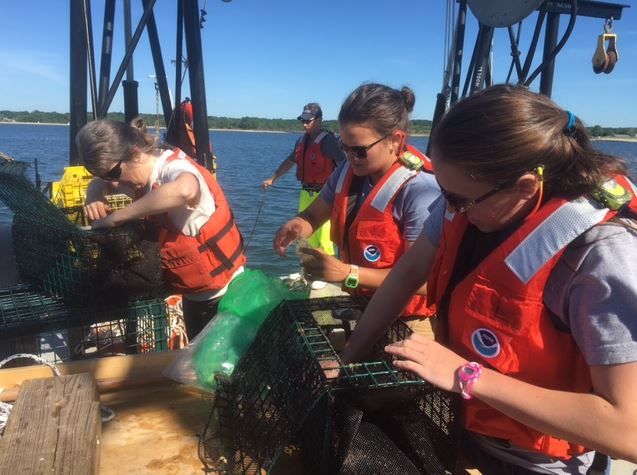
To sample the juvenile fish and invertebrate assemblages, the researchers conducted a trap study from June through September using wire mesh traps that were constructed in-house and baited with fresh, shucked northern quahogs (Mercenaria mercenaria). A total of 20 traps per habitat were deployed on each sampling day and they soaked for 24 hours before being retrieved the following day. Since oyster cages are vertical structures, the sampling effort at the cage farm was focused on a site adjacent to four large cages. Each cage had 20 trays holding approximately 300,000 oysters.
The results suggest that juvenile fish assemblages were similar between the cage farm and the rock reef. Tautog (Tautoga onitis; Figure 3), cunner (Tautogolabrus adspersus), oyster toadfish (Opsanus tau), and black sea bass (Centropristis striata) were found in comparable numbers between the two habitats. These species are reef-oriented fish that shelter in cavities and crevices.
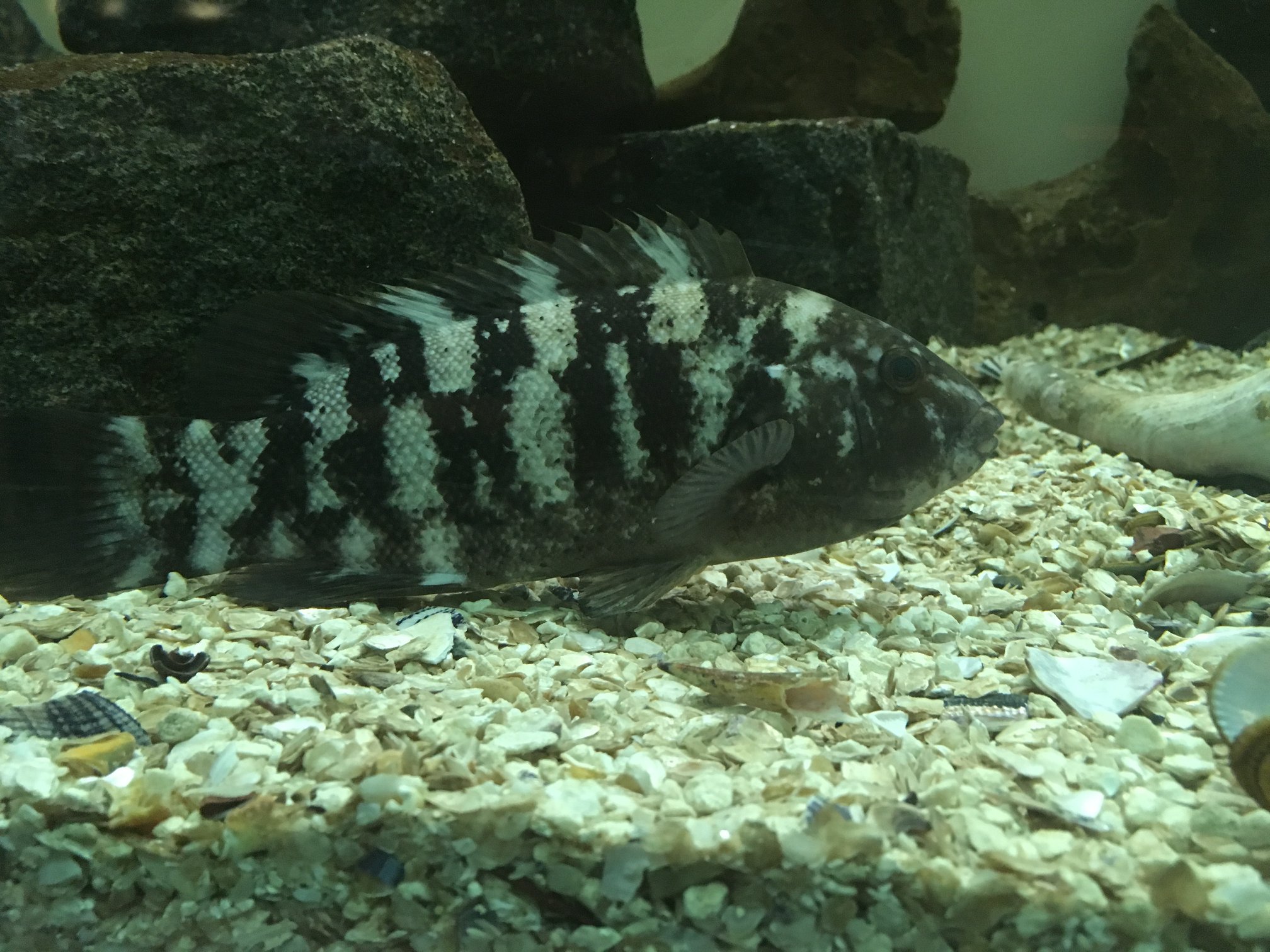
The fish species found on the shell bottom culture area differed from the cage farm and rock reef. Black sea bass (Figure 4) and scup (Stenotomus chrysops) were the most abundant fish species on this habitat. No tautog were caught on the shell bottom habitat and very few cunner and oyster toadfish were caught here compared to the other habitats. The fish assemblages may have been different because the vertical relief of the structure at the cage farm and rock reef is higher than that of the shell bottom habitat.
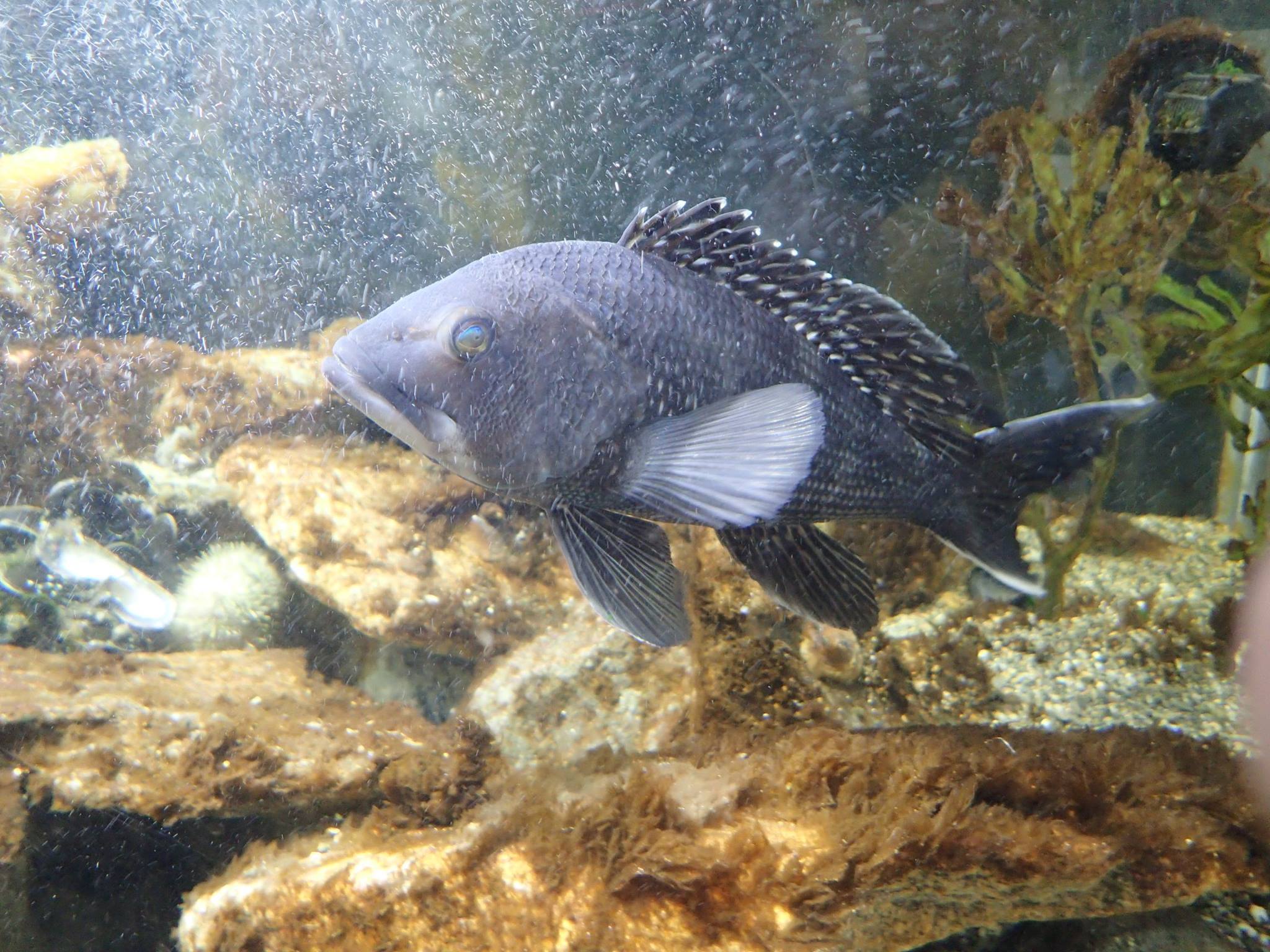
The invertebrate assemblages differed between the habitats. Portly spider crabs (Libinia emarginata) were abundant on the cage farm and shell bottom areas but were not as common on the rock reef. Channeled whelks (Busycotypus canaliculatus) were more abundant on the rock reef than the oyster aquaculture sites. Atlantic mud crabs (Panopeus herbstii) and flat-clawed hermit crabs (Pagurus pollicaris) were more abundant in the aquaculture sites than the rock reef. Both of these species commonly feed and find refuge on oyster reefs along the U.S. East Coast. These invertebrate assemblages are important in estuaries as they provide food for commercially important predatory fish species.
Oyster aquaculture provides valuable estuarine habitat to juvenile fish and invertebrate communities. Oyster cage farms transform estuarine habitat with flat, featureless bottoms into more complex habitat that invites a diversity of commercially and ecologically important species to forage and seek refuge. The results of this study led to a collaborative project that uses GoPro cameras to document the habitat services provided to fish by oyster cages in Long Island Sound. This “GoPro project” is collecting more detailed information about how fish interact with the oyster cages used in shellfish aquaculture.
Reference:
Mercaldo-Allen, R., P. Clark, Y. Liu, S. Meseck, L. Milke, and D. Redman. 2019. Macrofaunal assemblages on oyster aquaculture and rock reef habitat in Long Island Sound. North American Journal of Aquaculture 82(1): 92-100.


